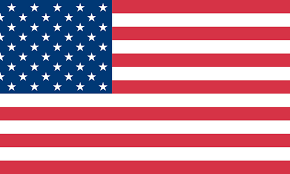Tips to Organize Your Classroom Library Using Printable Sticker Labels

Hey primary school teachers, as back to school season is coming back, I know you might already starting to thinking about creating a positive learning environment for students. A well-organized classroom library plays a vital role to have a good start.
Imagine a classroom where students can easily find books that captivate their interests, where they can immerse into literary adventures and explore new worlds.
But organizing a classroom library can be a daunting task. Where do we begin? How do we make classroom labels? In this blog post, I'll share practical tips and ideas on how to organize classroom library effectively using sticker labels.
Sort out your books
Relevance is a crucial aspect to consider when sorting books. You want to provide students with books that are relevant to their interest and life experiences. Some student prefer fantasy with exciting adventures, while others love exploring facts of the world in expository articles.You could sort books based on genres, such as fantasy, mystery, science fiction, non-fiction, and more. This allows students to find books within their preferred genres and explore different styles of writing.
Also,you might consider the age-appropriateness of the books since overly complex text might cause decrease of reading interest. Make sure to separate books into appropriate categories to cater to the different reading levels in your classroom.

source: theartoffunology
Using printable sticker labels
When it comes tocreating labels for classroom library, printable sticker labels can be game-changers. You can customize labels and tailor your library organization with speed and ease.
-
Genre Sorting:
Print labels that represent various genres such as mystery, fantasy, biography, historical fiction, and more. Affix these labels to the spine or cover of each book to help students easily identify their preferred genres.
-
Reading Levels:
You can use reading level systems, such as Fountas & Pinnell, Lexile, or DRA. Customize your labels accordingly, and attach them to the books to make it easier for students to select texts appropriate for their reading abilities.
-
Alphabetical Order:
Simplify the process of finding books by labeling them with alphabetized stickers according to the author's last name. This method helps students easily find their favorite author.
-
Series Identification:
Many young readers are drawn to book series. Create stickers that display the series name or number and attach them to the books. This allows students to easily locate and explore the writings of their favorite authors and discover new ones.
-
Topics or Themes:
Use sticker labels to categorize books by topics or themes such as animals, sports, history, science, or holidays. This approach helps students explore different subjects of interest.
-
Classroom Helpers:
Empower your students by designating some of them as "library helpers." Create special stickers for these students, which they can proudly wear during their library duty. This fosters a sense of responsibility and ownership.
-
Seasonal or Holiday Themes:
Add a touch of festivity to your classroom library by incorporating seasonal or holiday-themed stickers. Whether it's for Halloween, Thanksgiving, or winter holidays, these labels will help students locate books that align with the current season or celebration.
Introducing a thermal label printer
When it comes to organizing your classroom library, a thermal printer can be a game-changer. This handy device offers many benefits, saving you time and effort while creating professional-looking labels.
One significant advantage of a thermal label printer is its efficiency. Unlike traditional printers, it uses heat to print directly onto labels, eliminating the need for ink or toner cartridges. This means no more dealing with messy ink refills or smudged labels. With a thermal label printer, you can quickly produce high-quality labels with clear text and graphics, making your organization system visually appealing.
Time is precious for teachers, and a thermal label printer can help you save some. These printers offer fast printing speeds, allowing you to create multiple labels in seconds. Instead of spending hours handwriting or manually printing and cutting labels, a thermal label printer automates the process, freeing up your time for other important tasks in the classroom.
When choosing a thermal label printer, affordability and user-friendliness are essential. There are several options specifically designed for educators and small businesses, offering a good balance of features and price. One popular and budget-friendly choice is the Munbyn bluetooth thermal printer, which offers compact and easy-to-use printers for label printing.
To make the most of your thermal label printer, make sure you have a steady supply of compatible labels. Many printers come with their own brand of labels, but you can also find generic labels that work with different models. Consider investing in labels of various sizes or shapes to accommodate different labeling needs within your library.
Wrap up
In conclusion, organizing your classroom library is an essential task that can significantly impact your students' reading experiences and overall learning journey. Remember, a well-organized library is not just a collection of books; it's a gateway to imagination, knowledge, and endless possibilities. So let's continue to cultivate a reading culture in our classrooms, where students can embark on literary adventures and find inspiration within the pages of a book. Happy organizing!

